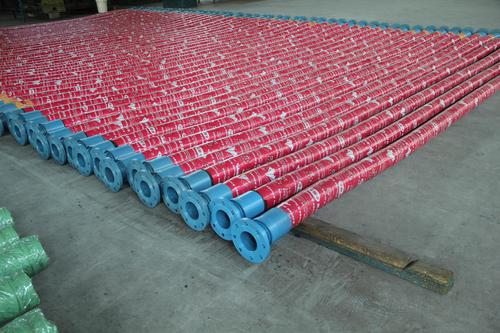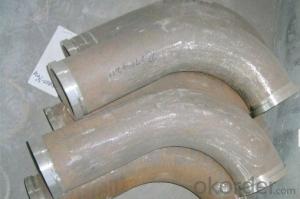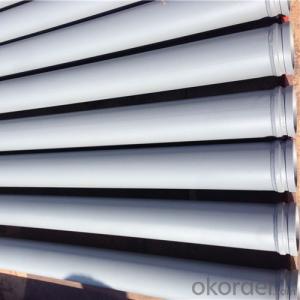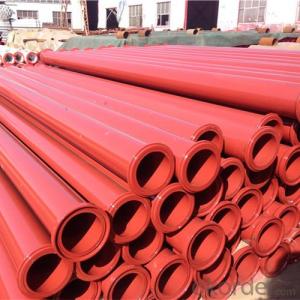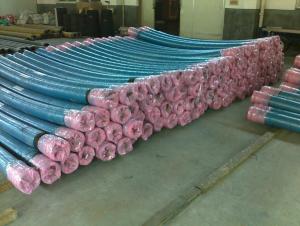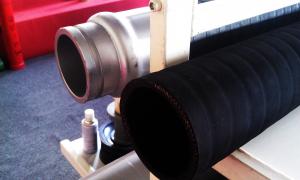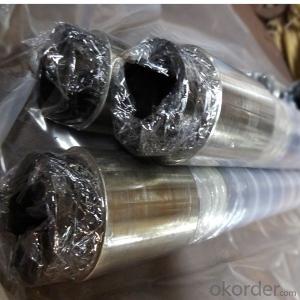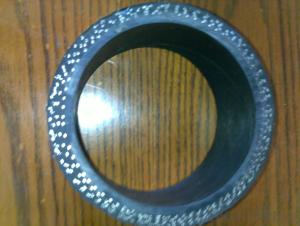Concrete Pump Rubber End Hose DN100
- Loading Port:
- China Main Port
- Payment Terms:
- TT OR LC
- Min Order Qty:
- -
- Supply Capability:
- -
OKorder Service Pledge
OKorder Financial Service
You Might Also Like
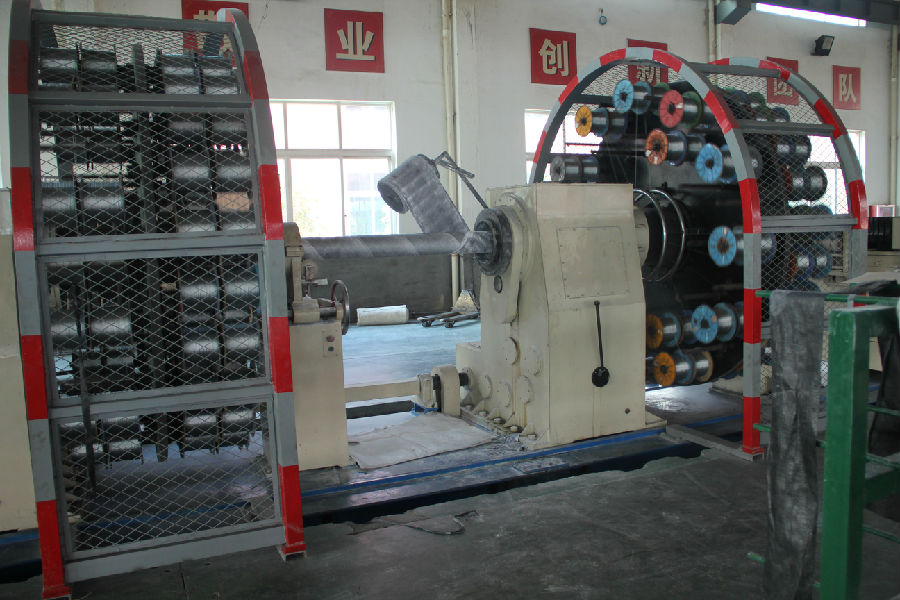
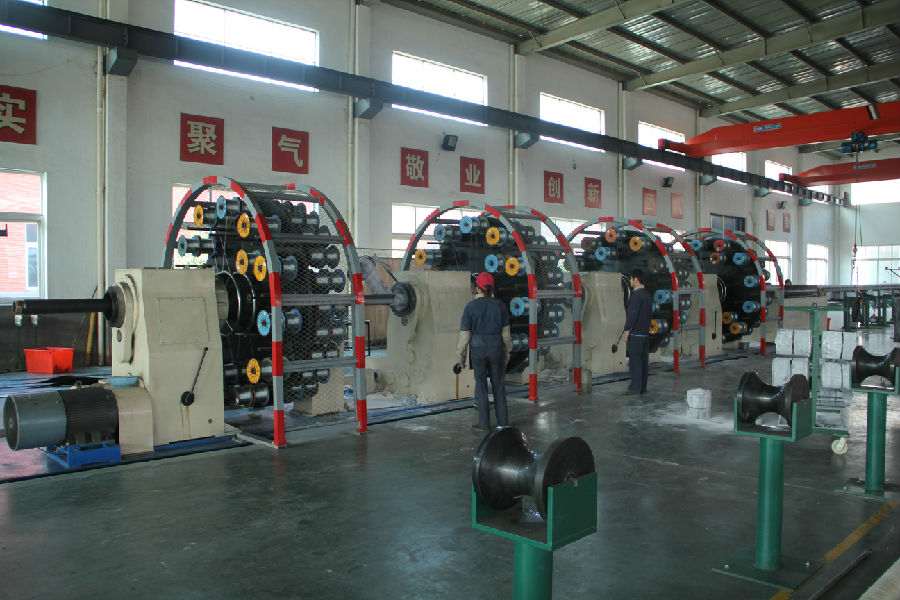
Specifications
Dn100 concrete pump rubber hose1.Size:4 inch
2.Steel hose
3.2 or 4 piles of steel wires for your choose.
DN100 CONCRETE PUMP RUBBER HOSE
1.Work Pressure:85~1250(BAR/PSI)
2.Burst Pressure:200 to 2940(BAR/PSI)
3.Working life:20000m³
4.The inside of hose is high abrasion resistant.
5.Integrated hose end and inner wall harden,prolong work life.
Relevant Information:
Name | Concrete rubber hose; Delivery hose; End hose; Concrete pump hose; Boom hose |
Size | 2"/2.5"/3"/3.5"/4"/4.5"/5"/6"or according to client’s requirement |
Length | 3M,5 or Any length |
Reinforcement | Steel wire, tire cord or fabric |
Hose End | Galvanized, inner wall harden |
Application | Schwing, Putzmeister, Sany, Zoomlion, etc |
- Q: What are the signs of wear and tear in concrete pump spare parts?
- Some signs of wear and tear in concrete pump spare parts include cracks or fractures in the components, excessive vibration or noise during operation, decreased performance or efficiency, leaks or drips from seals or connectors, and visible corrosion or rust on metal parts. Additionally, worn-out or damaged rubber gaskets, seals, or O-rings can also indicate the need for replacement.
- Q: How often should concrete pump outriggers be inspected and maintained?
- Concrete pump outriggers should be inspected and maintained regularly, ideally before each use and at least once a month. This ensures their proper functioning and helps prevent any potential accidents or damage.
- Q: How do I identify the right spare part for my concrete pump model?
- To identify the right spare part for your concrete pump model, there are a few steps you can follow: 1. Refer to the manufacturer's manual: The manufacturer's manual is the best place to start as it usually provides detailed information about the concrete pump model and the corresponding spare parts. Look for the part numbers, descriptions, and any specific instructions for ordering or replacing parts. 2. Research online: Use the internet to search for your concrete pump model and related spare parts. Many manufacturers have official websites or authorized distributors that offer product catalogs or online databases where you can search for the specific part you need. Look for compatibility charts or diagrams that match your concrete pump model with the appropriate spare parts. 3. Consult with a specialist: If you're unsure about the compatibility or availability of spare parts for your concrete pump model, it's a good idea to consult with a specialist. Reach out to the manufacturer's customer service or contact a local distributor or service center that specializes in concrete pumps. Provide them with the details of your pump model and the specific part you are looking for, and they should be able to guide you in identifying the right spare part. 4. Check with other concrete pump owners: Reach out to other concrete pump owners or operators who have the same or a similar model as yours. They may have experience with finding and replacing spare parts and can provide recommendations or tips on where to look or who to contact. Remember, it is crucial to ensure that the spare part you choose is compatible with your concrete pump model to avoid any damage or malfunction. Taking the time to research and consult with experts will help you identify the right spare part and keep your concrete pump running smoothly.
- Q: What are the signs of a damaged concrete pump cylinder?
- Indicators of a damaged concrete pump cylinder are plentiful. One unmistakable sign is the leakage of hydraulic fluid from the cylinder. Should you observe any fluid dripping or pooling around the cylinder, it is possible that the seal or piston has been compromised. Unusual noises during operation can also suggest a damaged cylinder. If you detect any atypical clanking, grinding, or knocking sounds emanating from the pump, it may be a consequence of a damaged cylinder. This can stem from various issues, including a bent piston rod, worn-out bearings, or misalignment of components. A decrease in pumping efficiency is another common indication of a damaged cylinder. If you perceive that the pump is not effectively delivering concrete as it once did, it is likely due to a damaged cylinder. This can lead to diminished output, slower pumping speed, or even a complete failure to pump concrete. Performing a visual inspection can aid in identifying signs of a damaged cylinder. Observe the cylinder body for visible cracks, dents, or deformations. Additionally, examine the piston or piston rod for signs of excessive wear, such as scratches or grooves. Lastly, frequent breakdowns or malfunctions with the concrete pump can be an indication of a damaged cylinder. Consistent repairs or failures may be a consequence of underlying issues with the cylinder, such as fatigue, corrosion, or improper maintenance. Should you notice any of these signs, it is crucial to promptly address the issue. Continuing to operate a concrete pump with a damaged cylinder can result in further damage, increased repair costs, and potential safety hazards. It is recommended to consult a professional technician or the manufacturer to assess and repair the damaged cylinder.
- Q: What is the concrete delivery pump?
- Another is a pump consisting of a pump body mounted on an automobile chassis and fitted with retractable or bent cloth poles.
- Q: How can the concrete pump be installed and used?
- Concrete conveying pipe joints should be sealed tightly, pipe should be firmly connected. The vertical pipe shall be no less than 10m horizontal pipe with check valve. The vertical pipe shall not be attached directly to the outlet of the concrete pump.
- Q: What are the signs of a faulty concrete pump control box?
- Some signs of a faulty concrete pump control box may include malfunctioning buttons or switches, erratic or inconsistent pump operation, failure to start or stop the pump, and abnormal or unusual sounds coming from the control box. Additionally, if there are any visible signs of damage, such as loose wires or burnt components, it could indicate a problem with the control box.
- Q: How is a concrete pump pipe different from a regular pipe?
- A concrete pump pipe is specifically designed for pumping high-pressure concrete mixture from a concrete pump truck to the desired location. Unlike a regular pipe, a concrete pump pipe is made of high-quality and durable materials such as hardened steel or alloy, which can withstand the high pressures and abrasion caused by the concrete mixture. One key difference between a concrete pump pipe and a regular pipe is the thickness of the walls. Concrete pump pipes have thicker walls to ensure they can handle the high pressure and abrasive nature of the concrete mixture. Regular pipes, on the other hand, are designed for various purposes such as water or gas transportation and therefore may not have the same level of thickness and durability. Additionally, concrete pump pipes often come with different end connections, such as flanges or couplings, to allow for easy connection and disconnection to the concrete pump truck and other pipeline components. This ensures a secure and leak-free transfer of the concrete mixture. Furthermore, concrete pump pipes may also have special design features to enhance their performance and longevity. These features can include wear-resistant linings, heat treatment, or galvanization to prevent corrosion and extend the lifespan of the pipe. In summary, a concrete pump pipe differs from a regular pipe in terms of its materials, thickness, end connections, and design features. These differences enable concrete pump pipes to handle the unique requirements of pumping high-pressure concrete mixtures efficiently and effectively.
- Q: Can I get spare parts for both single-cylinder and multi-cylinder concrete pumps?
- Yes, you can get spare parts for both single-cylinder and multi-cylinder concrete pumps. Many manufacturers and suppliers offer spare parts for different types of concrete pumps, including both single-cylinder and multi-cylinder models. These spare parts can include components such as hydraulic cylinders, pistons, seals, valves, hoses, and other essential parts that may need replacement due to wear and tear or damage. It is essential to reach out to the specific manufacturer or supplier of your concrete pump to inquire about the availability and compatibility of spare parts for your particular model.
- Q: How can one determine the correct hardness and durometer rating for rubber components in concrete pump spare parts?
- Several factors must be taken into consideration when determining the appropriate hardness and durometer rating for rubber components in concrete pump spare parts. To begin with, it is crucial to have a thorough understanding of the specific application requirements of the rubber components. This entails considering factors such as pressure, temperature, and frequency of use. Additionally, it is important to assess the compatibility of the rubber material with concrete and any other chemicals that may come into contact with the components. Ensuring chemical resistance is vital for guaranteeing the longevity and durability of the rubber parts. Furthermore, the anticipated load and stress on the rubber components must be carefully analyzed. This includes evaluating the weight of the concrete, the force exerted during pumping, and the potential for impact or abrasion. Moreover, environmental conditions should not be overlooked. Exposure to sunlight, extreme temperatures, or harsh weather conditions can significantly impact the performance and lifespan of rubber components. It is also essential to consider the specific type of rubber material being used. Different rubber compounds possess varying hardness and durometer ratings. Seeking guidance from rubber manufacturers or suppliers who specialize in concrete pump spare parts can provide valuable insights and recommendations based on their expertise and experience. Ultimately, determining the correct hardness and durometer rating for rubber components in concrete pump spare parts necessitates a meticulous evaluation of application requirements, compatibility, load and stress factors, environmental conditions, and expert advice.
Send your message to us
Concrete Pump Rubber End Hose DN100
- Loading Port:
- China Main Port
- Payment Terms:
- TT OR LC
- Min Order Qty:
- -
- Supply Capability:
- -
OKorder Service Pledge
OKorder Financial Service
Similar products
Hot products
Hot Searches
Related keywords



